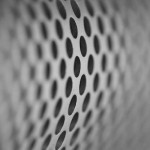I’ve had the strangest problem with Aperture, and I’ve absolutely no idea what went wrong. I’ve been using it for over a year, and merrily backing up to a vault on my NAS device, as referenced files. It’s always been a bit glitchy with the ‘finding’ of the masters if I subsequently want to make a change: I would do a path update, and still have the offline master warning if I tried to relocate it. The only way that I could reliably get this to work en masse was by doing a vault update – no big deal as these were sporadic enough to coincide with backup activity anyway. I should mention that, because the NAS device is noisy and slow, I only turn it on when I have to.
Anyway, the arrival of my AppleTV around the end of January has prompted a lot of looking back at old projects, editing, and metadata slicing and dicing as a consequence – smart folders organised by Faces etc. I decided over the weekend that I’d do mass ‘consolidate master file’ update over about a year’s worth of projects, and it crashed at some stage. It’s hard to say when as I left it running overnight to do it.
The next night I decided to to the path update and vault sync, and rather than taking about 5 minutes, the sync took about 4 hours. I decided to have a look at the NAS directory structure and the vault appears to have turned itself inside out. Having read up on this a bit, if you don’t specify a location for the masters when you load the images from your camera [or some other storage], Aperture will put them inside the vault package. I’ve duly looked and it’s almost empty. I now find myself with about 5,500 pictures in two separate directories, one where the vault is, and one in the directory above. By a process of elimination [i.e., deleting them, then trying to resync, and watching Aperture delete previews from the library. I had backed them up before!] I’ve discovered these are the masters.
The naming convention is peculiar, with the files have been renamed in numeric order in the format <unknown>_nnnn.jpeg [I have a lot of RAW and a few Tif files as well] – the angle brackets are literal.
So the long-term path to recovery is to consolidate the libraries for the period of time that Aperture has been managing my imports; export them to a directory structure reflecting year, month and event, and then creating a brand new library from scratch. From now on I’ll set the image import preferences to copy the pictures from my camera to this manually assigned directory structure – something I should have done from the start.
The masters are all there, in the exploded version of the vault. It’s just that they are mixed up with pre-Aperture days images, and with unrecognisable names. This is going go take quite a while. Especially as Aperture isn’t finding everything… Oh dear…
The irony is that part of the reason I did this in the first place – the mass consolidation – was so that Apple TV would have access to the highest quality images. This is almost certainly daft: I can’t imagine that it uses anything other the previews – dumping 20 meg raw files down the wireless network for slideshows is extremely unlikely.
One last piece of weirdness: my entire library has converted itself to referenced, right across the board.


